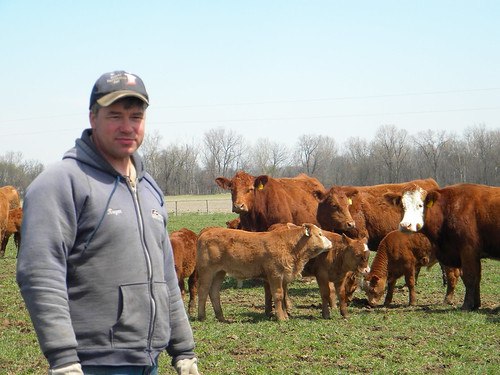White roofs have been proven to help cool buildings-thus saving energy and bringing down air-conditioning costs-while also helping to reduce a city's temperature by reflecting more sunlight back to space. But what would happen with a white roof in a Chinese city, where elevated pollution levels might turn a white roof sooty after a few months?
Lawrence Berkeley National Laboratory (Berkeley Lab) scientists are working in collaboration with researchers at Oak Ridge National Laboratory and Dow Chemical Company in a unique project to develop and commercialize a superhydrophobic additive that would make white roofs repel water and resist soiling, and thus stay cleaner and last longer.
This is just one of several green building projects that have been initiated under the U.S. Department of Energy's U.S.-China Clean Energy Research Center Building Energy Efficiency Consortium (CERC-BEE), which launched three years ago. In that time, it has made steady progress toward the research and development of low-energy technologies for buildings, including patent applications and new product launches this year, about 100 articles published, and five demonstration projects in China that validate, fine-tune, and showcase everything from smart windows to advanced lighting controls to microgrids.
"China is the largest commercial building market in the world, adding 2 billion square meters of new construction per year," said CERC-BEE director Nan Zhou, also deputy head of Berkeley Lab's China Energy Group. "That means there's an enormous potential to save energy. The technologies developed by the CERC-BEE consortium could save $2 billion and avoid emissions of 100 million metric tons of CO2-equivalent between the two countries every year if the CERC-BEE policies and technologies are adopted."
CERC-BEE is unique, Zhou added, because it gives government researchers the opportunity to collaborate with private companies in one of the fastest-growing markets in the world. "We are establishing long-term partnerships to solve critical energy problems in buildings while accelerating commercialization of energy-saving technologies," she said. "China is building so much faster, and they're eager to experiment. We will have completed five demonstration buildings in China in two years, showcasing many U.S. technologies. This timeframe would be nearly impossible in the U.S. And these technologies will be instrumented, measured, and researched to provide new information that could lead to further innovation. "
Private-public collaboration speeds implementation
Berkeley Lab scientist Francis Rubinstein, a lighting system expert working with Lutron Electronics on two advanced lighting control demonstrations in China, said that CERC will allow new technologies to be deployed much faster than if he had been working alone.
"The fact that CERC has closely tied national lab and university investigators to the industries making those products and systems increases the likelihood that we'll be able to make real-world changes," Rubinstein said. "If we had been working in isolation, then at the end, tossed our research over the transom to industry, they probably wouldn't be able to catch it. If you work with industry at this earlier stage you're helping to inform the details of how this system is used. By doing this kind of research with manufacturers it's much more likely the output will end up getting used."
Research and demonstration projects under the CERC umbrella include building envelope technologies (such as cool roofs and insulation), renewable energy integration, policy incentives and building operation. In one project, Rubinstein and Lutron will implement a dimmable, fully automated lighting system in a Chinese office building. Another CERC project, recognizing that human behavior is the largest variable in a building's energy efficiency, will integrate behavior into building design simulation tools, potentially reducing energy use by up to 50 percent in new buildings.
The cool roof project seeks to demonstrate the feasibility of the superhydrophobic cool roof coatings in China as well as the United States. It will use an accelerated soiling system developed at Berkeley Lab to predict in just three days how well the coating can maintain its reflectance, a process that would otherwise take three years of natural exposure to test.
Helping develop green building policies and codes
Besides the technology development, an added benefit that CERC brings is the ability to help shape China's very nascent policies, standards, and codes around green buildings. "These policies will enable scale up for adoption of new technologies, resulting in large reductions in energy usage and carbon emissions, and can help U.S. energy efficiency technologies to gain more markets," said CERC-BEE project manager Brian Heimberg.
Added Ronnen Levinson, Berkeley Lab's cool roof project lead: "We're working with the Chinese government's Research Institute of Standards and Norms and the Guangdong Provincial Academy of Building Research to develop policies to incentivize use of cool roofs. The newest national building standards credit cool roofs in certain locations, and other standards are being actively discussed. These help lay the groundwork for cool roofs in China."
This, of course, is also a benefit to U.S. companies. "We're developing relationships with the people in government who will be developing the green building codes," said Robert Nachtrieb, Lutron's lead scientist and also chair of the CERC-BEE U.S. Industrial Advisory Board. "We feel that if we bring some of those best practices of U.S. building codes to China, it will not only help China save energy, but it's also a business opportunity for us."
President Obama and then Chinese President Hu Jintao formally announced the establishment of the CERC during the President's trip to Beijing in 2009. It will receive $12.5 million in U.S. government funding over five years. This will be matched by consortium partners, providing at least $25 million in total U.S. funding. Contributions from industry have increased an average of 40 percent annually in the first three years. Chinese counterparts contributed an additional $25 million. CERC also includes two other consortia-the Advanced Coal Technology Consortia led by West Virginia University and the Clean Vehicles Consortia led by the University of Michigan.
Besides Oak Ridge, other members of the CERC-BEE consortium include MIT, ICF International, and the National Resource Defense Council. The industrial partners include Dow Chemical, Saint-Gobain, ClimateMaster, Sage, C3, Bentley, 3M, and Lutron.
As with cool roofs, awareness of lighting controls in China is lower than in the U.S. By introducing China to new energy-savings technologies, the CERC-BEE activities benefit all U.S. businesses. "We're essentially growing the market for all lighting controls companies," Nachtrieb said. "The entire industry benefits."
| 




